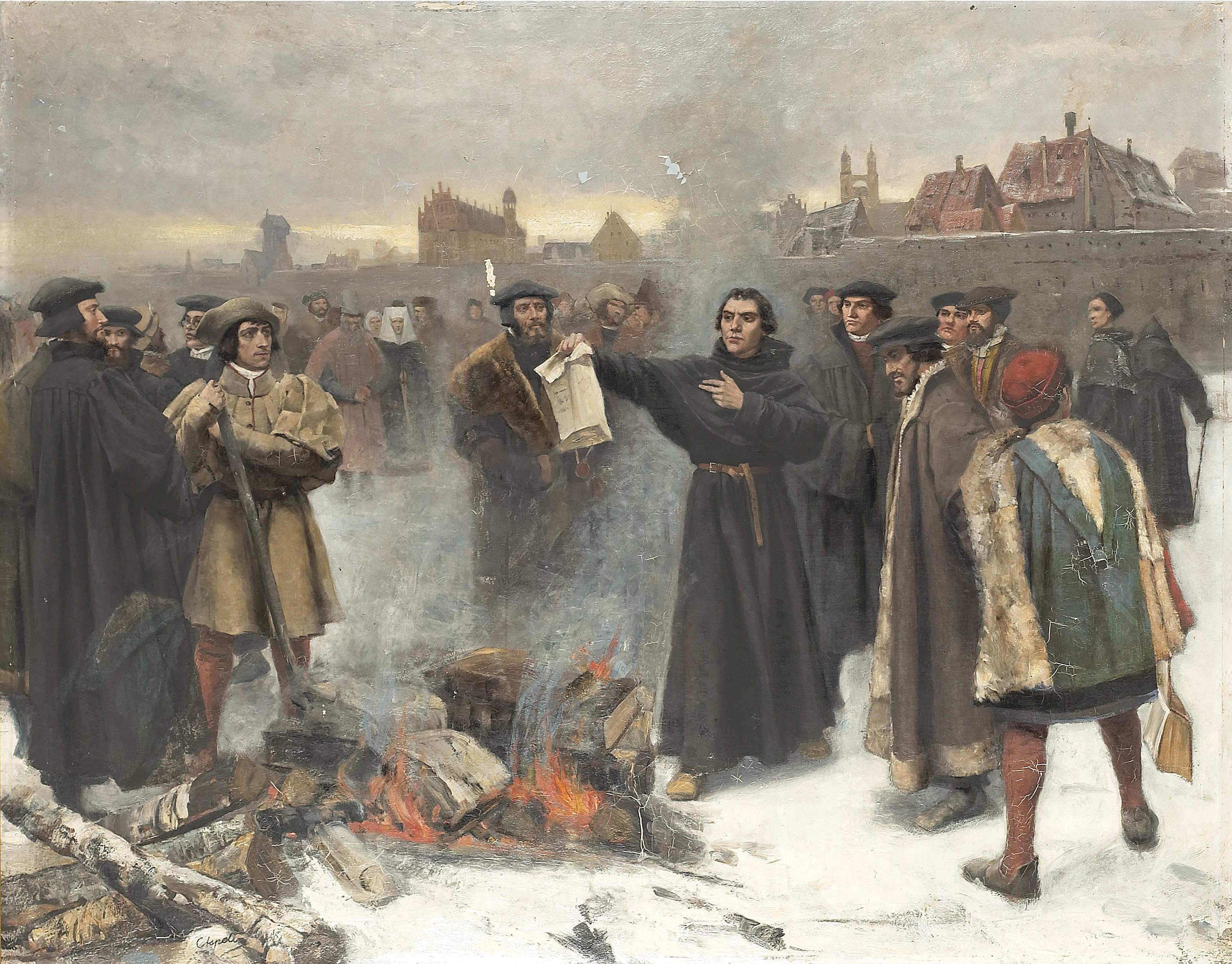Luther and Church History
Christianity could not obtain its freedom from the wicked nature of kings and popes across Europe, so history began to be replaced by the early fathers, by recalling them as saints, such as St. Polycarp. Since his death was by a Roman emperor, they refer to him as a Catholic to say “we were the ones being persecuted by Rome.” They were not Roman Catholic but were canonized as saints of the church. Saints of this world are not the saints of God based on how righteous they have been.
Martin Luther saw no difference between the ancient and medieval eras regarding religious persecution, but a lot of what was going on during that time was the Catholic Church rebuilding Western civilization. The building of bridges and the advancement of technology brings us to the Renaissance era, a period when much science, art, architecture, and literature had spread across Europe. Talented artists, such as Leonardo Da Vinci and Michelangelo, painted some of the most notable artworks in the Sistine Chapel, including the Last Supper and the Pieta. Further examples of their artwork included The Mona Lisa, The Creation of Adam, and The Last Judgement, which were done to signify intelligent design and the second coming of Jesus.
Martin Luther took part in the Renaissance by forming ideas against them, especially against the teachings of Erasmus. He also freed many people out of captivity because many of them had accepted Catholic doctrine at that point. There was nobody to really explain what the church was because any part of Christianity outside of it was being outlawed or punished to death by the pope.
For example, John Huss, one of the early reformers before Martin Luther, was martyred at the Council of Constance over his faith and teachings against the church. Huss lived in the city of Prague, the capital of the Holy Roman Empire that he defied. When he was sent over to Constance to defend his beliefs, he prophesied that there would be someone else who would take his place to rebel against Catholic rulers. His death led to the Hussites War, but once the war was over, there had been no other person to testify their examination against the church despite having many followers.
Diet of Worms
In the year 1517, Luther nailed his 95 Theses on the bishop’s castle door in Wittenberg, Germany. It was sent over to Pope Leo X after it was distributed throughout Germany. By 1520 the pope had issued the papal bull to excommunicate him, but Luther would have it burned. Three months later, he was brought before Emperor Charles V at the Diet of Worms, where he was given a chance to recant his writings. But he did not rescind by saying, “here I stand” to confirm his account against them. Charles V then threatened to burn Luther at the stake, but he was protected by rich princes that came for his rescue. As a result, he issued a decree called “the Edict of Worms,” forbidding anyone to defend or favor the teachings of Martin Luther.
While he was on the run hiding in the city of Wartburg, Luther began translating the Bible into the German language while citizens were on the lookout to either arrest or have him killed. Some people thought that he was provoking a war with his upheaval while others were yet to know who he was because of his writings being burned by the papacy. Copies of his books still made it across Germany and to other parts of Europe when meeting with Johannes Gutenberg, who was the inventor of the printing press. Other people would later become Luther’s successors, including John Calvin and Huldrych Zwingli, who were leaders of reform in Switzerland. Zwingli already knew about the corruption of the Catholic Church even before Luther did. John Calvin had invented his theological belief of predestination, the idea that God has chosen his people before they were born, which was originally started by Augustine of Hippo.
The English Reformation
William Tyndale (1494-1536) had also translated the Bible into the English language, particularly the New Testament. Before then, John Wycliffe had also translated the Bible into the English language in the 14th century, but that was prior to the printing press being invented, so copies of it were only handwritten. In 1408, the church had banned the English translation of the bible anyways. Wycliffe was one of the early reformers that Luther was influenced by for his writings, as well as the works of John Huss.
Over a century later, Tyndale had sailed to the city of Worms, Germany to have his translations published and smuggled into England. He was offered a trip back to England but he refused until he could legally translate the Bible into English. Bishops had burned the translations that were made by him, but over six thousand copies of them were made and distributed across Europe. While hiding in the city of Antwerp, he would continue to translate the Old Testament while agents of the King went searching for him. Unfortunately, an Englishman pretended to be his friend and had him arrested and put in prison for heresy. King Henry VIII had him strangled and burned at the stake for believing that salvation came through the gospel. But he had prayed for the King of England to open his eyes, and it was answered. Henry VIII then made a copy of the English bible available to parishioners in every church across England.


Comments
Post a Comment